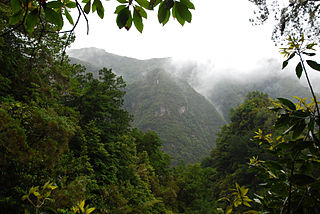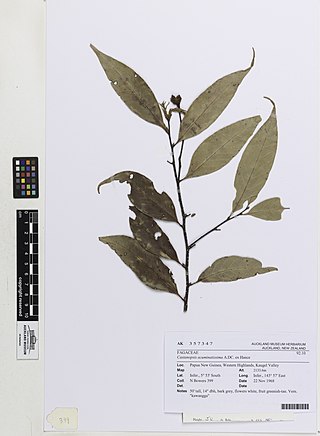
The Fagaceae are a family of flowering plants that includes beeches, chestnuts and oaks, and comprises eight genera with about 927 species. Fagaceae in temperate regions are mostly deciduous, whereas in the tropics, many species occur as evergreen trees and shrubs. They are characterized by alternate simple leaves with pinnate venation, unisexual flowers in the form of catkins, and fruit in the form of cup-like (cupule) nuts. Their leaves are often lobed, and both petioles and stipules are generally present. Their fruits lack endosperm and lie in a scaly or spiny husk that may or may not enclose the entire nut, which may consist of one to seven seeds. In the oaks, genus Quercus, the fruit is a non-valved nut called an acorn. The husk of the acorn in most oaks only forms a cup in which the nut sits. Other members of the family have fully enclosed nuts. Fagaceae is one of the most ecologically important woody plant families in the Northern Hemisphere, as oaks form the backbone of temperate forest in North America, Europe, and Asia, and are one of the most significant sources of wildlife food.

Chrysolepis is a small genus of plants in the family Fagaceae, endemic to the western United States. Its two species have the common name chinquapin. The genus occurs from western Washington south to the Transverse Ranges in Southern California, and east into Nevada.

Laurel forest, also called laurisilva or laurissilva, is a type of subtropical forest found in areas with high humidity and relatively stable, mild temperatures. The forest is characterized by broadleaf tree species with evergreen, glossy and elongated leaves, known as "laurophyll" or "lauroid". Plants from the laurel family (Lauraceae) may or may not be present, depending on the location.

Castanopsis, commonly called chinquapin or chinkapin, is a genus of evergreen trees belonging to the beech family, Fagaceae. The genus contains about 140 species, which are today restricted to tropical and subtropical eastern Asia. A total of 58 species are native to China, with 30 endemic; the other species occur further south, through Indochina to Indonesia and the Philippines, mountainous areas of Taiwan, and also in Japan. The English name chinkapin is shared with other related plants, including the golden chinkapins of the Pacific United States, which are sometimes included within Castanopsis but are more often considered a separate but very closely related genus, Chrysolepis.

Castanopsis cuspidata is a species of Castanopsis native to southern Japan and southern Korea.

The Central Mountain Range is the principal mountain range on the island of Taiwan. It runs from the north of the island to the south. Due to this separation, connecting between the west and east is not very convenient. The tallest peak of the range is Xiuguluan Mountain, 3,860 m (12,664 ft).
Castanopsis hystrix or Patle katus is a species of evergreen broadleaf tree, which grows up to 30 meters in height.

Castanopsis acuminatissima is an evergreen tree native to Southeast Asia and New Guinea. It is known by a variety of common names over its range, including white oak, New Guinea oak, Papua New Guinea oak, ki riung, ko-duai, ko-soi, ko-mat, meranak, and riung anak.
Acrocercops melanoplecta is a moth of the family Gracillariidae. It is known from Hong Kong, India (Meghalaya), Japan, Nepal and Taiwan.
Acrocercops mantica is a moth of the family Gracillariidae. It is known from China (Guangdong), Hong Kong, India (Meghalaya), Indonesia (Java), Japan, Korea and Nepal.

Castanopsis sieboldii, also known as the Itajii chinkapin or Itajii, is a species of evergreen tree that lives in subtropical eastern Asia. This is a climax species that is commonly found in the Japanese temperate rainforest. Specimens are also present within the forest area of the Tokyo Imperial Palace.
Castanopsis costata is a tree in the family Fagaceae. The specific epithet costata is from the Latin meaning 'ribbed', referring to the leaf venation.
Castanopsis hypophoenicea is a tree in the family Fagaceae. The specific epithet hypophoenicea means 'crimson beneath', referring to the indumentum on the leaf underside.

Castanopsis javanica, the Javan chestnut-oak, is a tree in the beech family Fagaceae. The specific epithet javanica is from the Latin, meaning "of Java".
Castanopsis motleyana is a tree in the family Fagaceae. It is named for the botanist James Motley.

Castanopsis indica is a tree in the family Fagaceae.

Castanopsis argentea is an evergreen tree native to Indonesia, where it is known as sarangan. It is native to the islands of Java and Sumatra.
Castanopsis tribuloides is a species of flowering plant in the beech family Fagaceae, native to the Himayalas and higher areas of mainland Southeast Asia. In Vietnam it is cultivated for its edible nuts, and in India it is coppiced for firewood.

Castanopsis eyrei is a species of flowering plant in the family Fagaceae, native to southern China, and Taiwan. An evergreen tree typically 8 to 20 m tall, it is usually found in late successional forests from 300 to 1,700 m above sea level, where it is often the dominant species. It is used as a street tree in a number of southern Chinese cities.










